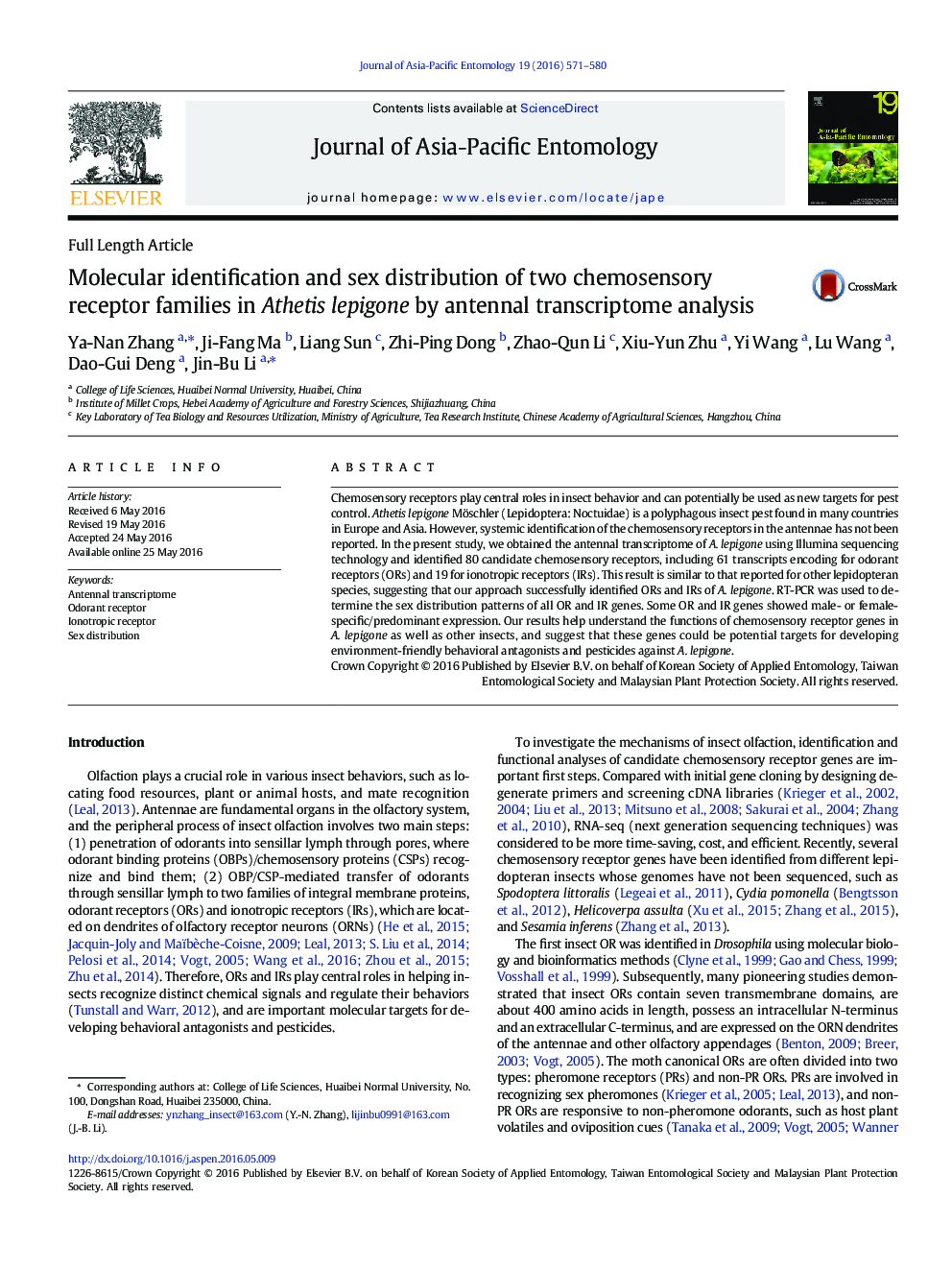| Article ID | Journal | Published Year | Pages | File Type |
|---|---|---|---|---|
| 6380089 | Journal of Asia-Pacific Entomology | 2016 | 10 Pages |
â¢We assembled antennal transcriptome of A. lepigone using Illumina sequencing technology.â¢We first identified 61 ORs and 19 IRs of A. lepigone.â¢Some ORs and IRs displayed antennae- or sex-specific/predominant expression.â¢Some ORs and IRs could be as potential targets to develop pollution-free pesticides against A. lepigone.
Chemosensory receptors play central roles in insect behavior and can potentially be used as new targets for pest control. Athetis lepigone Möschler (Lepidoptera: Noctuidae) is a polyphagous insect pest found in many countries in Europe and Asia. However, systemic identification of the chemosensory receptors in the antennae has not been reported. In the present study, we obtained the antennal transcriptome of A. lepigone using Illumina sequencing technology and identified 80 candidate chemosensory receptors, including 61 transcripts encoding for odorant receptors (ORs) and 19 for ionotropic receptors (IRs). This result is similar to that reported for other lepidopteran species, suggesting that our approach successfully identified ORs and IRs of A. lepigone. RT-PCR was used to determine the sex distribution patterns of all OR and IR genes. Some OR and IR genes showed male- or female-specific/predominant expression. Our results help understand the functions of chemosensory receptor genes in A. lepigone as well as other insects, and suggest that these genes could be potential targets for developing environment-friendly behavioral antagonists and pesticides against A. lepigone.
Graphical abstractDownload high-res image (273KB)Download full-size image
